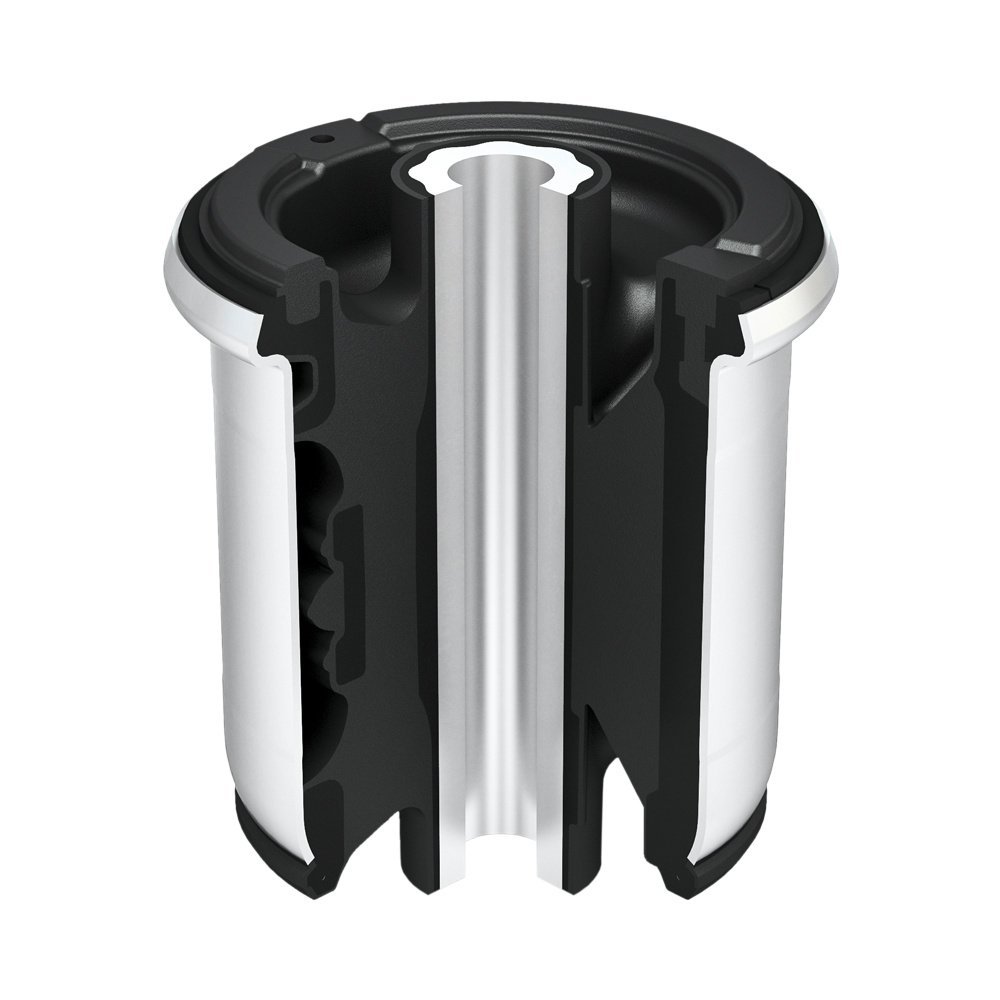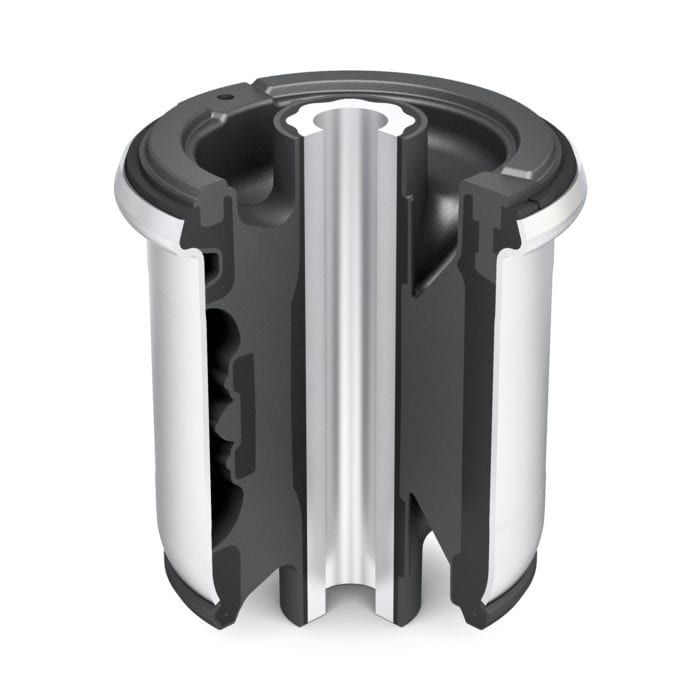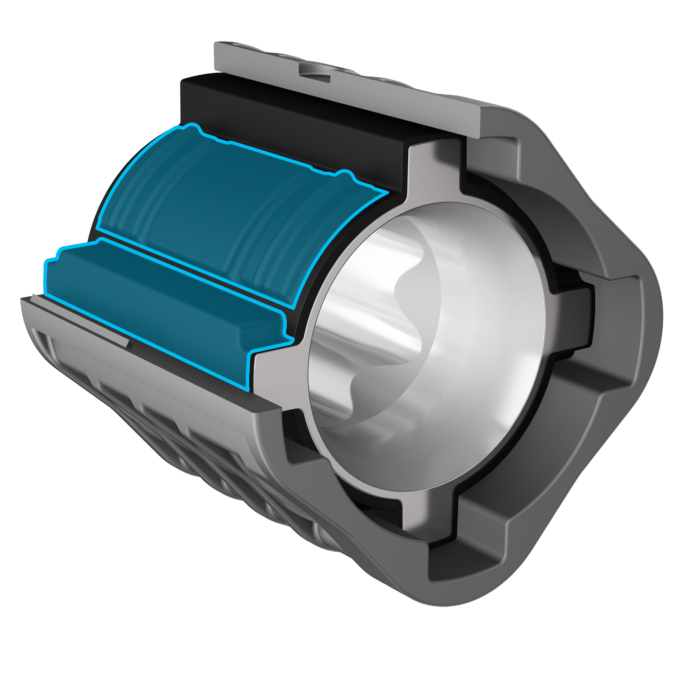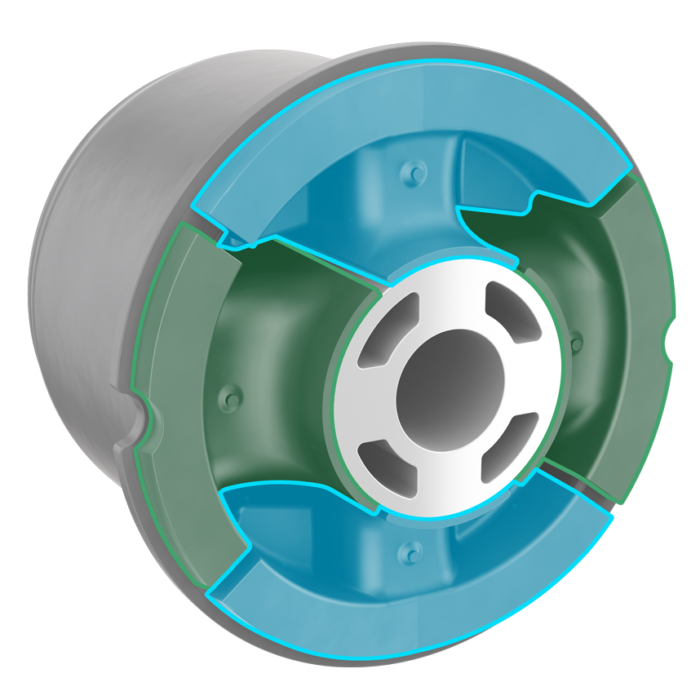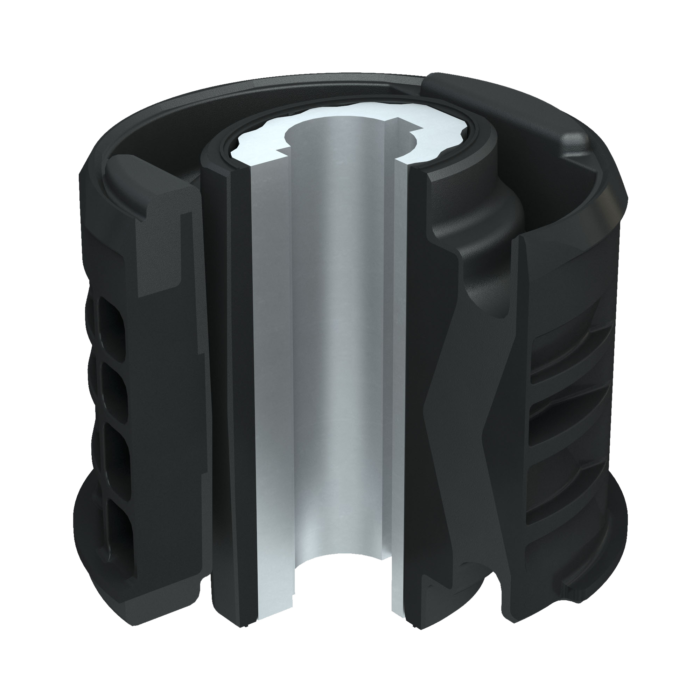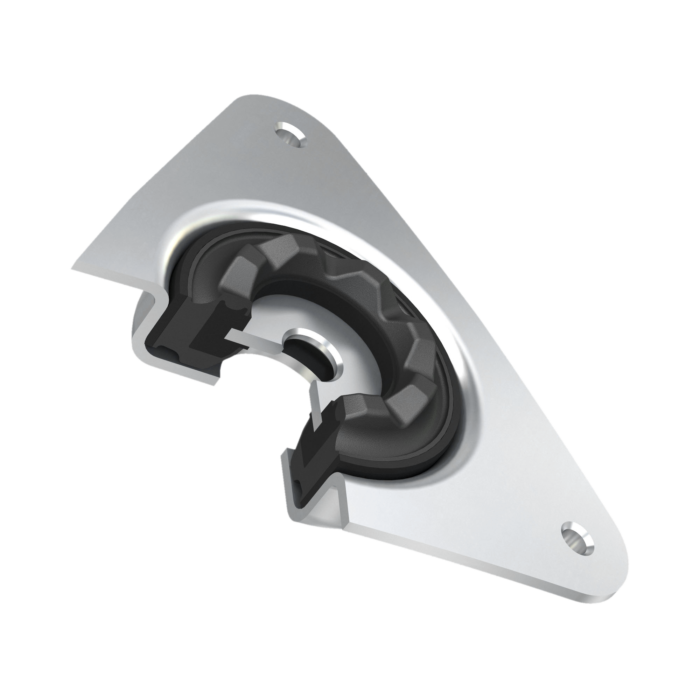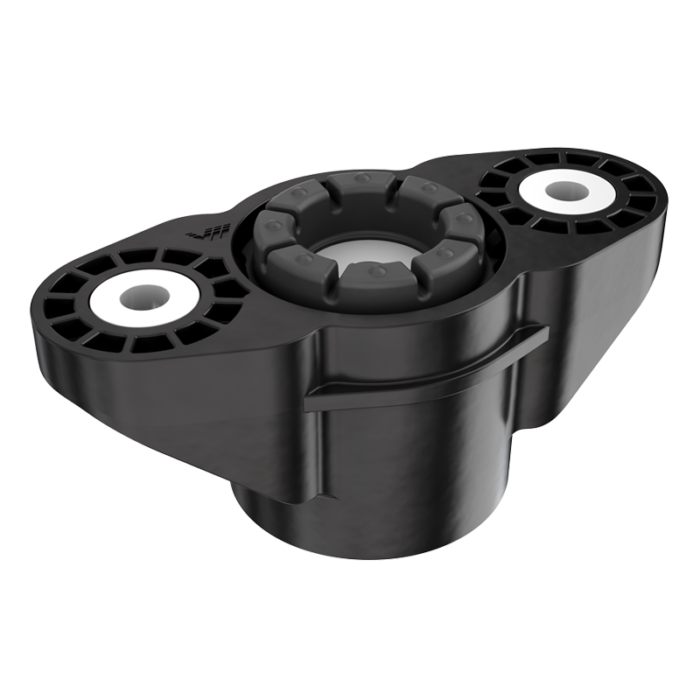Light Vehicle Products | Chassis Mounts
Hydro Bushings
Modify dynamic properties with hydraulic damping function
Modify dynamic properties with hydraulic damping function
Conventional bushings have a main rubber spring with a low damping rubber compound, modified to the required stiffness. In addition, hydro bushings include a fluid channel for adjustable hydraulic damping. The fluid responds to frequency and amplitude, and adjusts the dynamic properties of the bushing depending on the road excitations. Inserted rubber stoppers limit the radial and axial displacement and cover peak loads.
Because bushings are exposed to all types of weather, the outer housing can be made of non-corrosive materials like aluminum.
About Chassis Mounts
Dozens of chassis mounts control vibrations transmitted from the road surface into the chassis of the vehicle. Chassis mounts are small but important components that improve handling and safety, and reduce unwanted vibrations.
more
All bushings are designed to absorb loads, caused by road surface excitations, from multiple directions. The correct stiffness and damping of the bushings are essential to maximize vehicle road holding, ride and handling. Bushings must therefore be precisely tuned in line with the whole suspension system.
Minor vibrations create an unpleasant driving experience – severe ones can result in steering disturbances and body vibrations that pose serious safety risks. To reduce vibrations, vehicles have a number of chassis mounts fitted, e.g. for the transverse control arms, subframes, suspension struts and stabilizers.
The product portfolio ranges from conventional, hydro, DualRubber chassis bushings through steering column bushings, and subframe mounts to conventional and lightweight top mounts.

